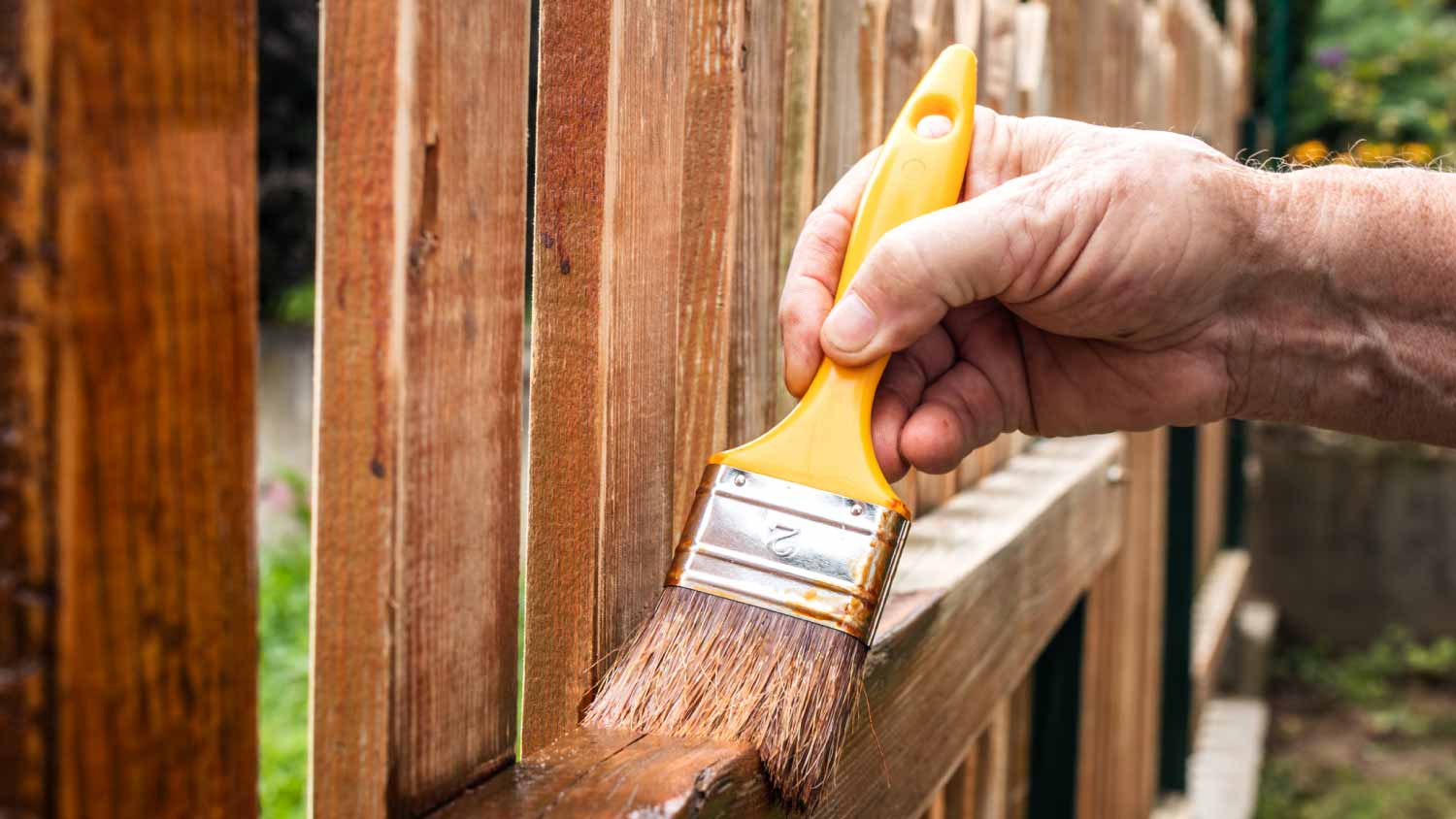
Sandblasting is a powerful method to remove paint, primer, and other coatings from hard surfaces. Learn the cost to rent a sandblaster and the factors involved.


Your fence’s size will determine how much stain you need for your fence.
Typically, a gallon of fence stain covers 200 to 400 square feet and costs $20 to $50.
To stain 600 square feet of fencing, you’d need two to three gallons of stain.
Staining a fence is a great DIY project for people of all skill levels. But if you’re doing it for the first time, you’ll inevitably have a few questions, including how many gallons of stain to buy. Luckily, you don’t have to be a math whiz to figure out how much stain you need for your fence. Instead, you can get a quick estimate with our fence stain calculator.
Generally, one gallon of stain will cover 200 to 400 square feet of fencing. If you’re planning to stain both sides of a six-foot fence, here’s how much stain you’d need:
| Fence Size (linear ft.) | Fence Size (sq ft.) | Gallons of Stain Needed | Cost |
|---|---|---|---|
| 25 | 300 | 1–2 | $20–$100 |
| 50 | 600 | 2–3 | $40–$150 |
| 75 | 900 | 3–5 | $60–$250 |
| 100 | 1,200 | 3–6 | $60–$300 |
| 150 | 1,800 | 5–9 | $100–$450 |
| 200 | 2,400 | 6–12 | $120–$600 |
| 300 | 3,600 | 9–18 | $180–$900 |
| 400 | 4,800 | 12–24 | $240–$1,200 |
| 500 | 6,000 | 15–30 | $300–$1,500 |

To figure out how much stain you need, you’ll first need to measure the length and width of your fence. Then, look at the label of the stain to see how many square feet it can cover per gallon.
Once you have those figures, you can use this formula to determine how many gallons you’ll need to stain one side of a fence. If you want to stain both sides, double the result.
Gallons of Stain Required = (Fence Height (in feet) x Fence Length (in feet)) / Coverage Area of One Gallon of Stain
For example, let’s say your fence is six feet high and 100 feet long, and the stain you choose can cover 300 square feet per gallon. In that case, you’d need two gallons to stain one side of the fence (or four gallons to cover both sides).
In order to calculate how much stain you need, you’ll have to know the square footage of your fence, and that involves measuring the height and length of your fence. Here’s how to measure a traditional type of wood fence:
Measure the height of your fence, starting at ground level and stopping at the highest point of the fence.
Measure the total length of your fence.
Multiply the height by the length to get the fence’s square footage.
However, this method isn’t effective if you’re staining a split rail fence, which has large gaps between the posts and rails. Instead, it may be easier to measure the area of each post and multiply it by the number of posts you plan to stain. Then, repeat that process for the rails. This will help you avoid ordering more fence stain than you need.
If you’re willing to roll up your sleeves and grab a brush, it’s possible to stain your own fence. But keep in mind: This is a time-consuming task that requires a good amount of physical effort. For DIYers, it takes about an hour to stain 10 to 20 linear feet of fencing.
Rather not tackle this job yourself? You can have a local fence staining pro do it for you. Not only does hiring a pro let you avoid the hassle of stripping, sanding, and staining your fence, but it also speeds up the process and helps ensure the job is done correctly.
From average costs to expert advice, get all the answers you need to get your job done.

Sandblasting is a powerful method to remove paint, primer, and other coatings from hard surfaces. Learn the cost to rent a sandblaster and the factors involved.

The cost to paint a house's exterior depends on its size, siding type, and height. The finish and the home's exterior condition also play a role.

The cost to paint a deck depends on its size, design, and whether you DIY. Read this guide to help set the budget for your deck painting project.

Are you looking to spruce up your porch with a fresh coat of paint? Read on for the best paint colors to maximize your home’s curb appeal.

Can brick be stained? With proper preparation, you can stain your home’s brick and give it a major refresh. Here’s what to know about this beautification project.

How much do painters charge? This question can only be answered after determining the scope and size of your painting project.